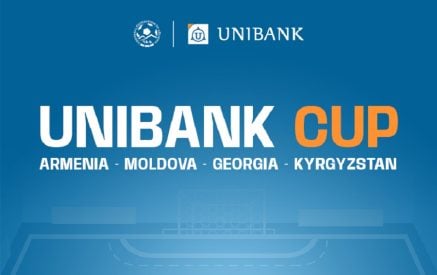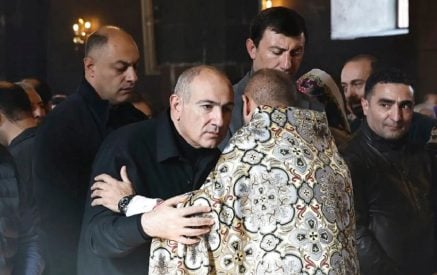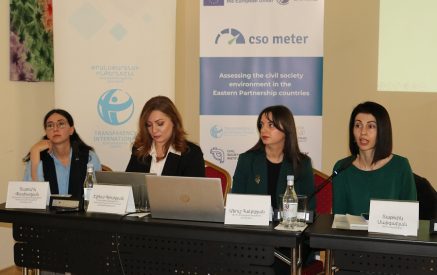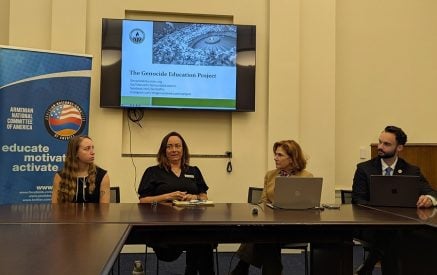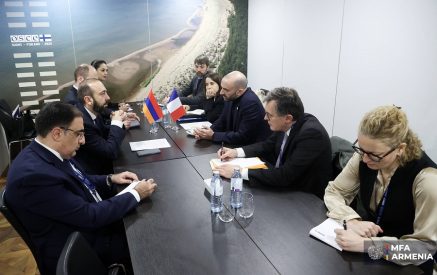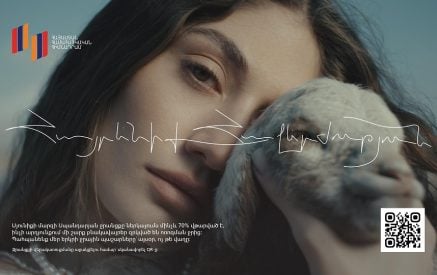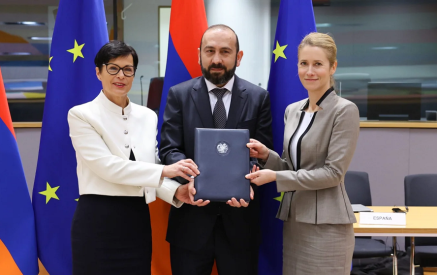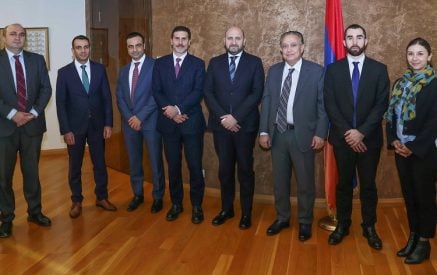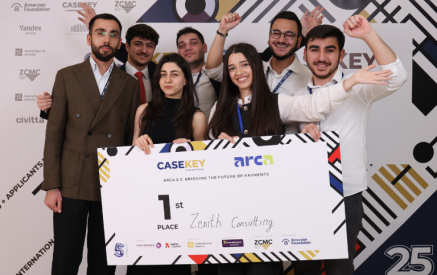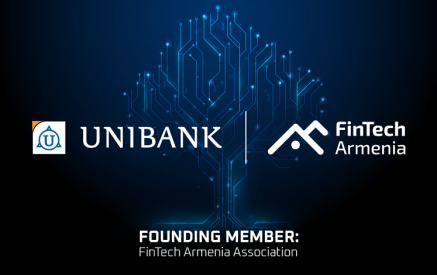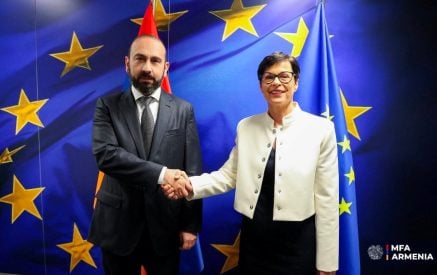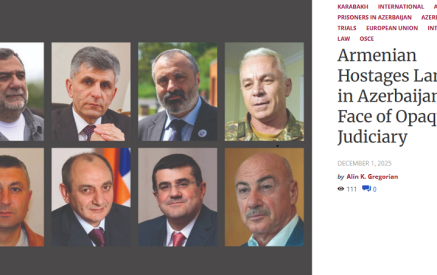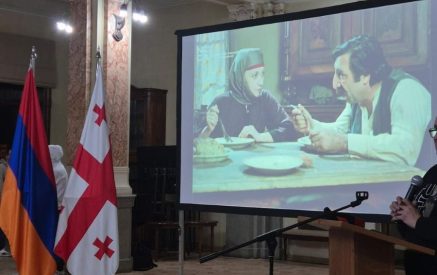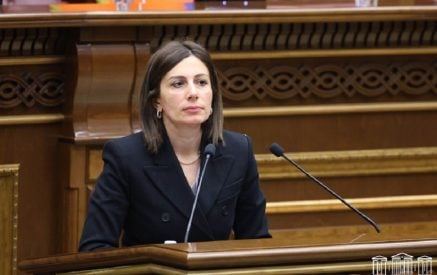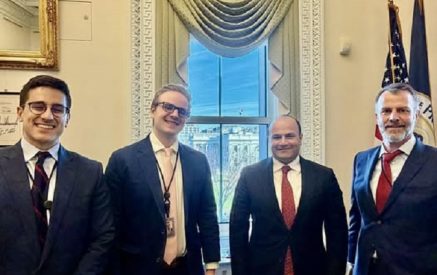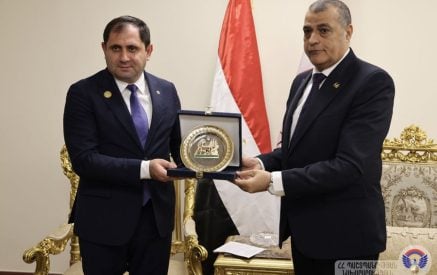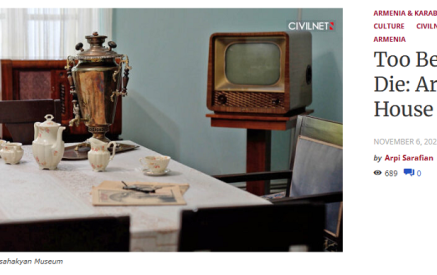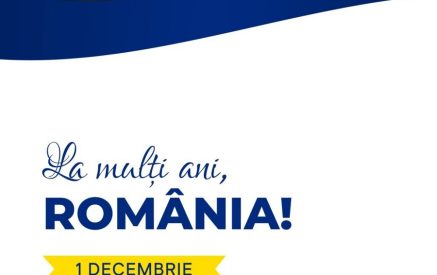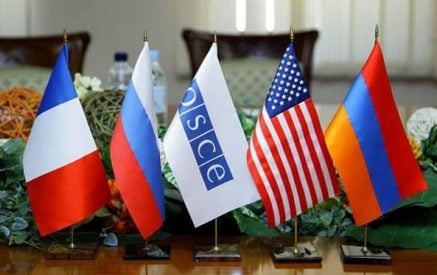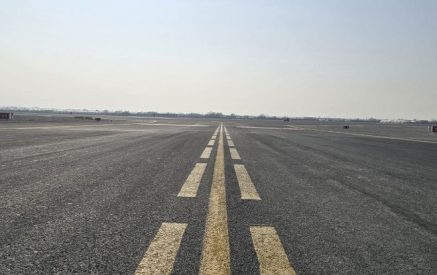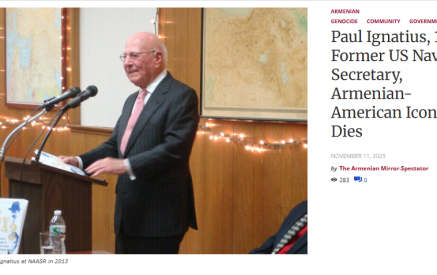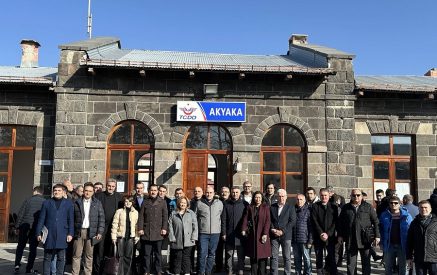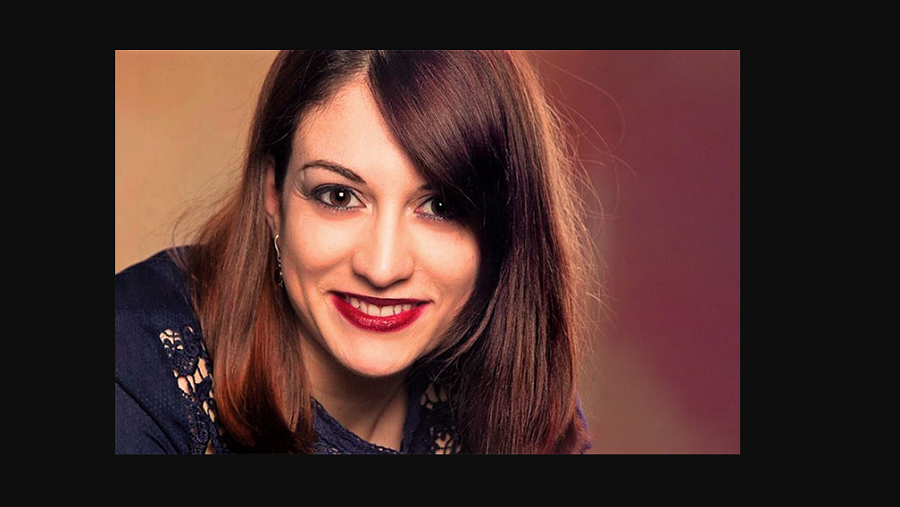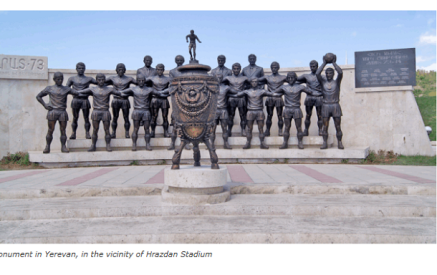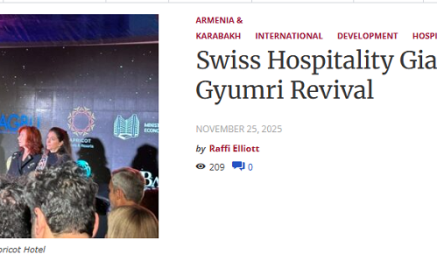by Artsvi Bakhchinyan
YEREVAN-CASTELSERÁS (Teruel, Spain) — Spanish journalist and anthropologist Virginia Mendoza (born in 1987 in Valdepeñas, Ciudad Real, Spain) holds degrees in both disciplines from the Universidad Miguel Hernández in Elche.
In 2013, she traveled to Armenia to work on a project about ethnic minorities as part of the European Voluntary Service. The country captivated her so deeply that she continued living in Yerevan, while also traveling to gather stories for a year and a half for various media outlets. She created her blog Cuaderno armenio as a sort of diary. The result of this confessed passion was her book Heridas del viento. Crónicas armenias con manchas de jugo de Granada (Wounds of the Wind: Armenian Chronicles Stained with Pomegranate Juice), self-published in 2015 and later republished by La línea del horizonte to reach a wider readership.
Read also
She is also the author of Quién te cerrará los ojos. Historias de arraigo y soledad en la España rural (Who Will Close Your Eyes: Stories of Roots and Loneliness in Rural Spain, Libros del KO, 2017).
Dear Virginia, I read Heridas del viento in Hasmik Amirgahyan’s wonderful Armenian translation. I hope the book was also well received in Spain. We Armenians often feel that our stories remain invisible to the wider world. As a Spanish journalist, what responsibility do you feel when writing about small nations and their struggles for recognition?
This is something piercing all my work, which I could say started in Armenia. I don’t think this is a question of responsibility, but interest in hidden or forgotten stories that could be in my rural origin.
In your book, Armenia is not only a setting but almost a living character. How did you manage to capture the soul of a country that at first was completely foreign to you?
Because I’m Armenian (laughs). Even when I’m joking, there’s some truth in it: everyone I met in Armenia thought I was Armenian. What I felt is that Armenians are very open to foreigners—especially to those who show genuine interest in their culture. Many people couldn’t believe I was making the effort to speak Armenian instead of Russian.
I’ve always felt that if you live in a place, you should learn the language of its people. If I were in Russia, I’d be interested in Russian. In Armenia, it felt important to speak Armenian. Armenians are usually very grateful for any interest shown by foreigners. When they sense this, they become even more open and welcoming—they could feel that I felt like one of them, and there’s a special kind of mutual connection that grows from that.
When you first arrived in Armenia, beyond the clichés, what surprised you, what unsettled you, and what touched you most deeply?
People in the airplane. On the airplane, I was traveling alone late at night. The woman sitting next to me tried to talk with me. I pulled out a dictionary to communicate, but it wasn’t working, so she walked through the plane searching for someone who spoke English.
Soon after, several Armenians around me quietly slipped the snacks from the flight attendants into my backpack. At least three of them gave me their addresses and phone numbers. One of them even stayed with me when we landed in Armenia.
There was a problem: someone had accidentally switched my baggage in Madrid, so I couldn’t prove I wasn’t Mr. Petrosyan (laughs). Finally, I spotted a man who looked like the person I imagined. I pointed to his bag and asked, “Are you Miss Mendoza?” He looked at me as if I were crazy—and yes, he was Petrosyan! The guard finally let me leave the airport.
To make matters worse, the person who was supposed to meet me had forgotten and gone to sleep. Through it all, the man who had stayed with me refused to go home until he was sure I was safe. Before that night, I had never felt so at home.
You dedicated your book to your grandfather Norberto, “who spoke to me about the Armenians in dreams, without knowing that he was sending me to find them by plane.” Could you tell us more about this very personal connection?
While visiting Auschwitz-Birkenau II in Poland, I received a call: my grandfather was dying. I didn’t have money for an urgent flight, but I had an Interrail global ticket, so I took several trains from Poland to Spain, hoping to reach him in time. I missed the chance to say goodbye by just one hour. After that, I dreamed of him every night.
One night, a friend mentioned that Armenia sounded like a place I would love. On a sudden impulse, I sent my CV late at night to an Armenian organization looking for a volunteer. That same night, I dreamt my grandfather told me he had been born on Calle de los Armenios — Armenians’ Street — in my village. I protested, saying that street didn’t exist. But he showed me his ID, and I could see he was right. I woke up with an unshakable feeling: Check your email—you’ve just found your path to Armenia. And indeed, there was an email waiting for me. I hadn’t realized it was the very last night before the deadline.
Ever since, I’ve felt as though my grandfather was guiding me to Armenia. Perhaps, given the context of that phone call, my mind connected different histories of genocide — who knows. But I felt he was urging me to write the stories of the last Armenian genocide survivors, and that is what I set out to do. I stop dreaming about him the day Heridas del viento went to print.
You have traveled to rural Armenia and Artsakh, places many outsiders never see. You entered homes and shared the tables of Armenians, Yazidis and Russian Molokans; you met some of the last genocide survivors; you spoke with the widow of the man who built an underground temple to save humanity from fire. Which of these encounters still live most vividly in your memory, and why?
All of them. Probably, meeting Movses and Iskuhi and visiting Levon’s Divine Underground. Movses, Iskuhi and Levon (through his family and his temple) gave me back the genuine desire to live and to keep faith in human being.
For Armenians, oral history and memory are sacred. How do you decide which voices and stories deserve to be written down, knowing they may remain the only record for the future?
It was very intuitive. In this case, I believe all of them were included. For books like this, I follow just one rule: a person deserves a full chapter if I can at least see their kitchen and share something meaningful with them—not just food, but a deeper, longer conversation or time spent together during their daily work.
If that’s not possible, they may become part of a chapter. And if I can’t speak with or even meet that person at all, I use documents and let their own words tell the story. For example, I never met the uncle who sent letters from the front to a friend’s family during World War II, but those letters are essential to the book.
There are a couple of exceptions in this book, simply because, in those cases, it made sense to do things differently.
Are you still in touch with some of the “heroes” and voices that appear in your book?
The protagonists were mostly around 90–100 years old back in 2013, so sadly, that’s no longer possible. But I’m still in touch with other important people connected to the book—friends who said, “You should meet…” or who even came with me and translated what was said.
It’s also wonderful how life keeps crossing our paths. In a few days, I’ll meet the friend who first told me I should write this story. And of course, there’s Hasmik Amiraghyan, my translator into Armenian — we’re always in touch and have even met not only in Armenia but also in Spain.
At one point, Nune — Levon’s granddaughter and the translator during the interview with her grandmother and others — was living just five kilometers from my parents’ house, and she was even able to meet my grandmother. This kind of magic always seems to happen when Armenia is involved.



